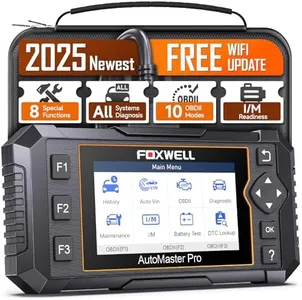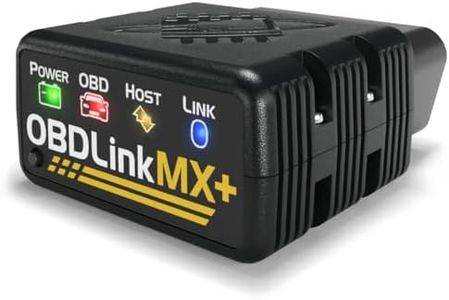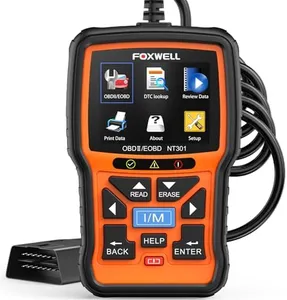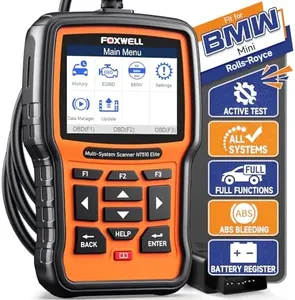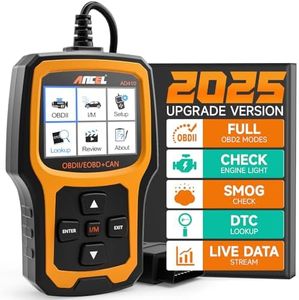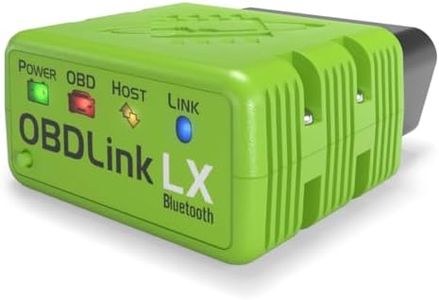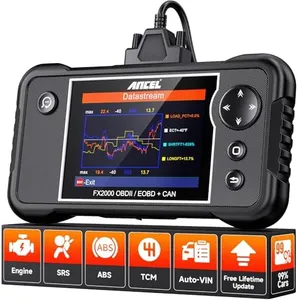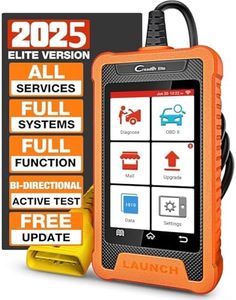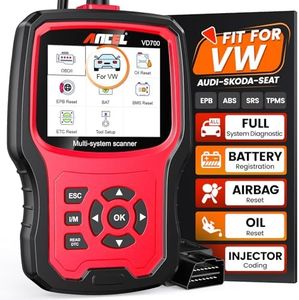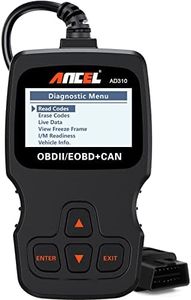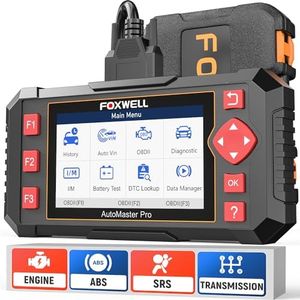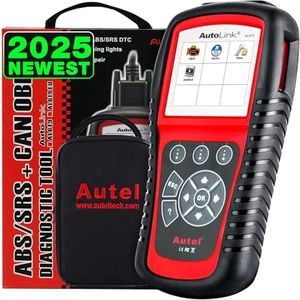We Use CookiesWe use cookies to enhance the security, performance,
functionality and for analytical and promotional activities. By continuing to browse this site you
are agreeing to our privacy policy
10 Best Obdii Scanners
From leading brands and best sellers available on the web.Buying Guide for the Best Obdii Scanners
Buying an OBD-II scanner can help you better understand what's happening inside your car, especially when a warning light pops up. These devices plug into your car's OBD-II port, usually found under the dashboard, and scan your car's computer system for trouble codes. By choosing the right scanner, you can save money on diagnostics, gain peace of mind, and sometimes even fix minor issues yourself. When picking the best OBD-II scanner for your needs, it’s helpful to understand the key features and how they relate to the types of vehicles you own and the information you want to access.CompatibilityCompatibility refers to whether the OBD-II scanner works with your specific car make, model, and year. This is crucial because an incompatible scanner won’t be able to read your car’s data. Most vehicles sold after 1996 in the US are OBD-II compliant, but there are some differences based on manufacturer and region. Scan your car’s manual or check the scanner’s compatibility list to make sure it covers your car. If you have several cars or plan to help friends, choosing a scanner that supports multiple brands and years may be best. For a single newer car, most basic models will suffice, but for older or imported vehicles, double-check the fit.
Scanner Type (Basic Code Reader vs. Advanced Scan Tool)The scanner type determines the range of functions your device can perform, from clearing simple error codes to displaying detailed, live data about your car’s systems. Basic code readers are straightforward, showing you the error code and sometimes a brief description, and are great for everyday drivers who just want to identify what a warning light means. Advanced scan tools are more sophisticated and can access more systems, provide live data, and even support special functions like ABS or airbag diagnostics. Think about how deep you want to dive into your car’s health: casual users might prefer basic readers, while hobbyists or those fixing cars regularly might benefit from advanced tools.
Display and InterfaceThis spec describes how the information from your car is presented to you and how you interact with the scanner. Some scanners have simple, built-in screens—these are easy to use and don't require extra devices. Others connect via Bluetooth or Wi-Fi to your smartphone or tablet, displaying data through an app, which often offers richer visuals and more features. The best choice depends on your preference: if you want something simple with no extra setup, go for a built-in display; if you’re comfortable using apps and like to have the latest features and updates, a wireless scanner may be better.
Live Data and Data LoggingLive data lets you view real-time information from your car’s sensors as you drive or idle, which can be helpful for troubleshooting intermittent issues or understanding vehicle performance. Data logging means the scanner can record this info for later review, which is useful for in-depth analysis. If all you want is to read and clear error codes, you may not need live data features. However, if you enjoy tracking your car’s performance or want to investigate tricky problems, look for a scanner that supports both live data and logging.
Update and SupportUpdate and support refers to how easily you can keep your scanner’s software up to date and whether the manufacturer offers help if you run into problems. OBD-II standards and car systems change over time, so having regular updates ensures your scanner stays accurate and compatible with new vehicles. Some scanners allow easy online updates, while others require a computer connection. If you want your tool to last and stay useful for future cars, look for one with simple update processes and good customer support.
